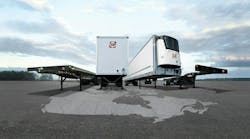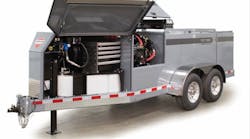The Environmental Protection Agency (EPA) reinforced existing greenhouse gas (GHG) emission regulations via a “proposed determination” for model year 2022 through 2025 light-duty vehicles – encompassing cars, sport utility vehicles (SUVs), pickup trucks, and vans.
The agency said in a statement that the “standards remain appropriate” and that “a rulemaking to change them is not warranted” based on what it describes as a “robust technical record” alongside positive support from automakers, other industry stakeholders, and updated analysis.
The public comment period for this “proposed determination” will end on December 30 this year, EPA said.
In a conference call with reporters, various industry experts stressed that the agency’s announcement did not result from lobbying efforts.
“I was surprised by this announcement; we were not lobbying for it,” noted John Boesel, president and CEO of CALSTART.
Bossel also said that these light-duty GHG rules – distinctly different from the Phase 2 rules covering Class 3 through 8 vehicles – help create a “green light” for automakers to incorporate what he dubbed a “wide range of fuel saving technologies” now being used on cars to pickup trucks and vans.
Work fleets can benefit greatly from wider use of fuel saving technologies,” he said. “For example, work pickups and vans spend far more time idling than does the average passenger car, so I expect greater use of anti-idling technologies will lead to greater fuel savings for them.”
Shannon Baker-Branstetter, policy counsel for energy and environment for Consumers Union, added that her organization’s analysis indicated that light-duty trucks will actually benefit more in terms of fuel savings from the model year 2022-2025 GHG rules.
“They drive many more miles than the average passenger car,” Baker-Branstetter said. “And the more they drive the more fuel they will save.”
Jack Gillis, director of public affairs for the Consumer Federation of America (CFA), noted that his group’s research indicates that the average U.S. household spends about $1,500 a year on gasoline, so that by maintaining the GHG standards, those households could reduce that annual expenditure.
“What is particularly remarkable about the standards is that they pay for themselves in the very first month of car ownership,” he added. “The cost of the technology needed to meet the standard is outweighed by the pocketbook savings in gasoline costs even at today’s low gas prices. As the cost of gas goes up, these savings will multiply.”








